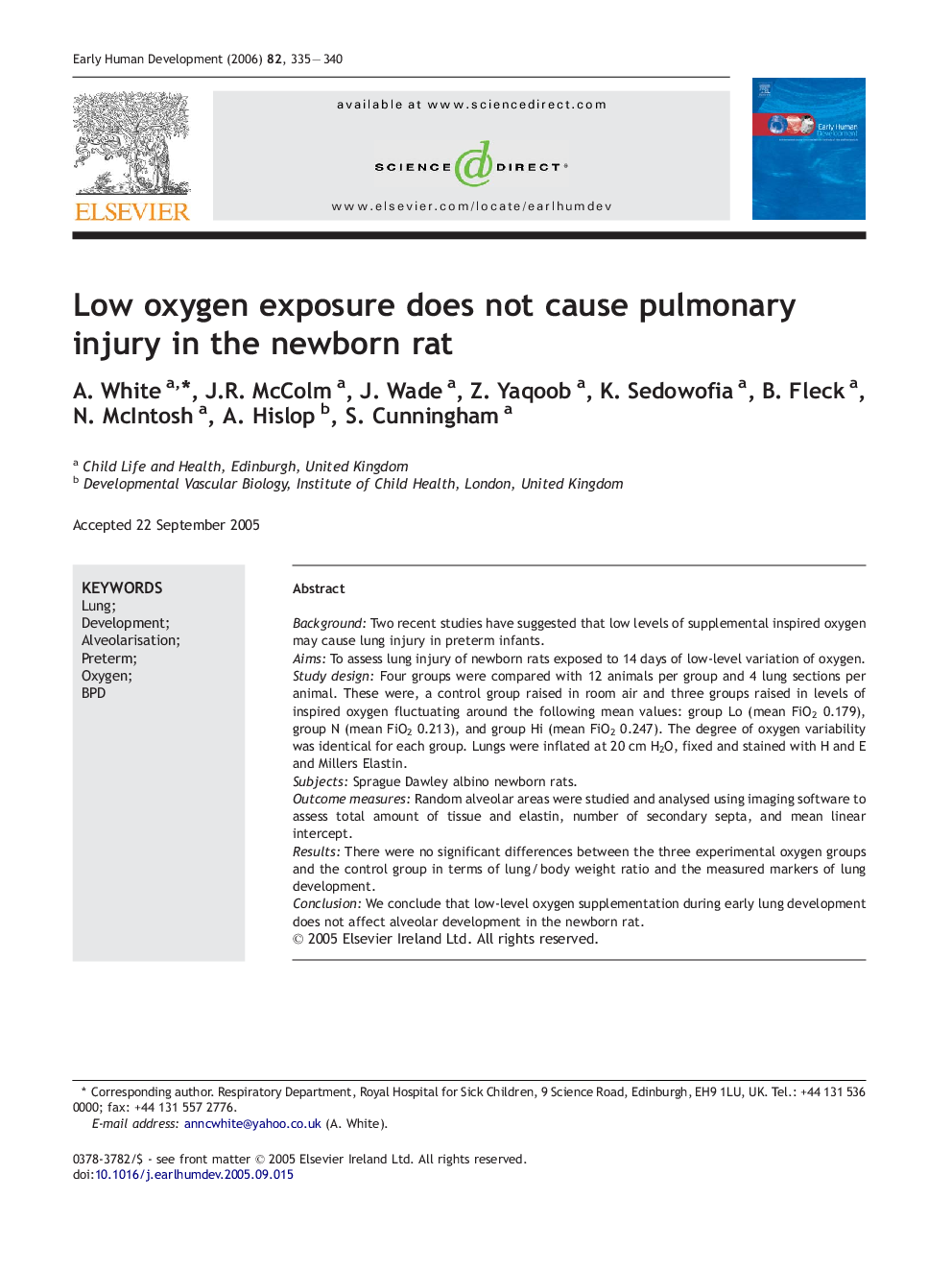| Article ID | Journal | Published Year | Pages | File Type |
|---|---|---|---|---|
| 3918403 | Early Human Development | 2006 | 6 Pages |
BackgroundTwo recent studies have suggested that low levels of supplemental inspired oxygen may cause lung injury in preterm infants.AimsTo assess lung injury of newborn rats exposed to 14 days of low-level variation of oxygen.Study designFour groups were compared with 12 animals per group and 4 lung sections per animal. These were, a control group raised in room air and three groups raised in levels of inspired oxygen fluctuating around the following mean values: group Lo (mean FiO2 0.179), group N (mean FiO2 0.213), and group Hi (mean FiO2 0.247). The degree of oxygen variability was identical for each group. Lungs were inflated at 20 cm H2O, fixed and stained with H and E and Millers Elastin.SubjectsSprague Dawley albino newborn rats.Outcome measuresRandom alveolar areas were studied and analysed using imaging software to assess total amount of tissue and elastin, number of secondary septa, and mean linear intercept.ResultsThere were no significant differences between the three experimental oxygen groups and the control group in terms of lung / body weight ratio and the measured markers of lung development.ConclusionWe conclude that low-level oxygen supplementation during early lung development does not affect alveolar development in the newborn rat.
